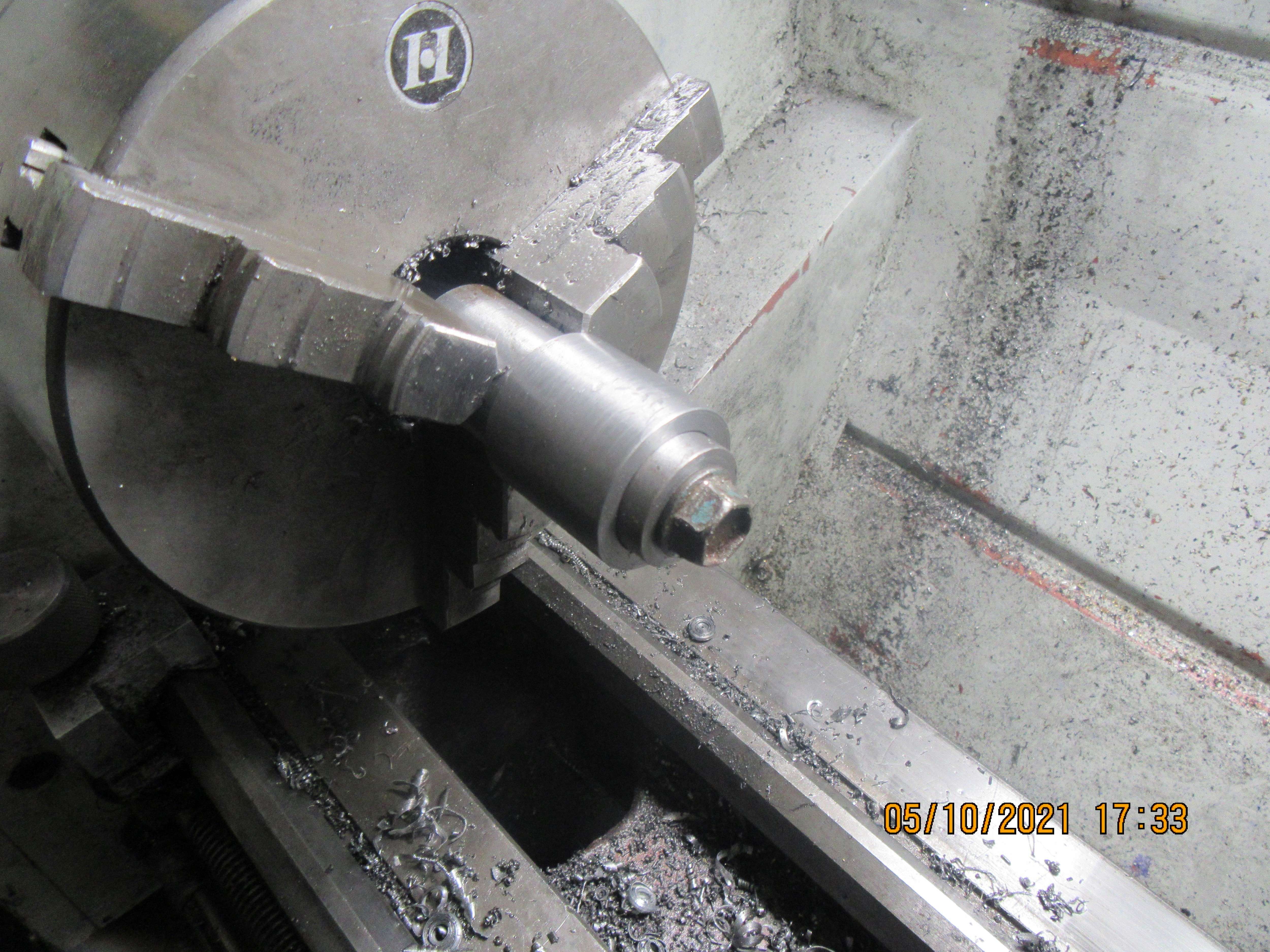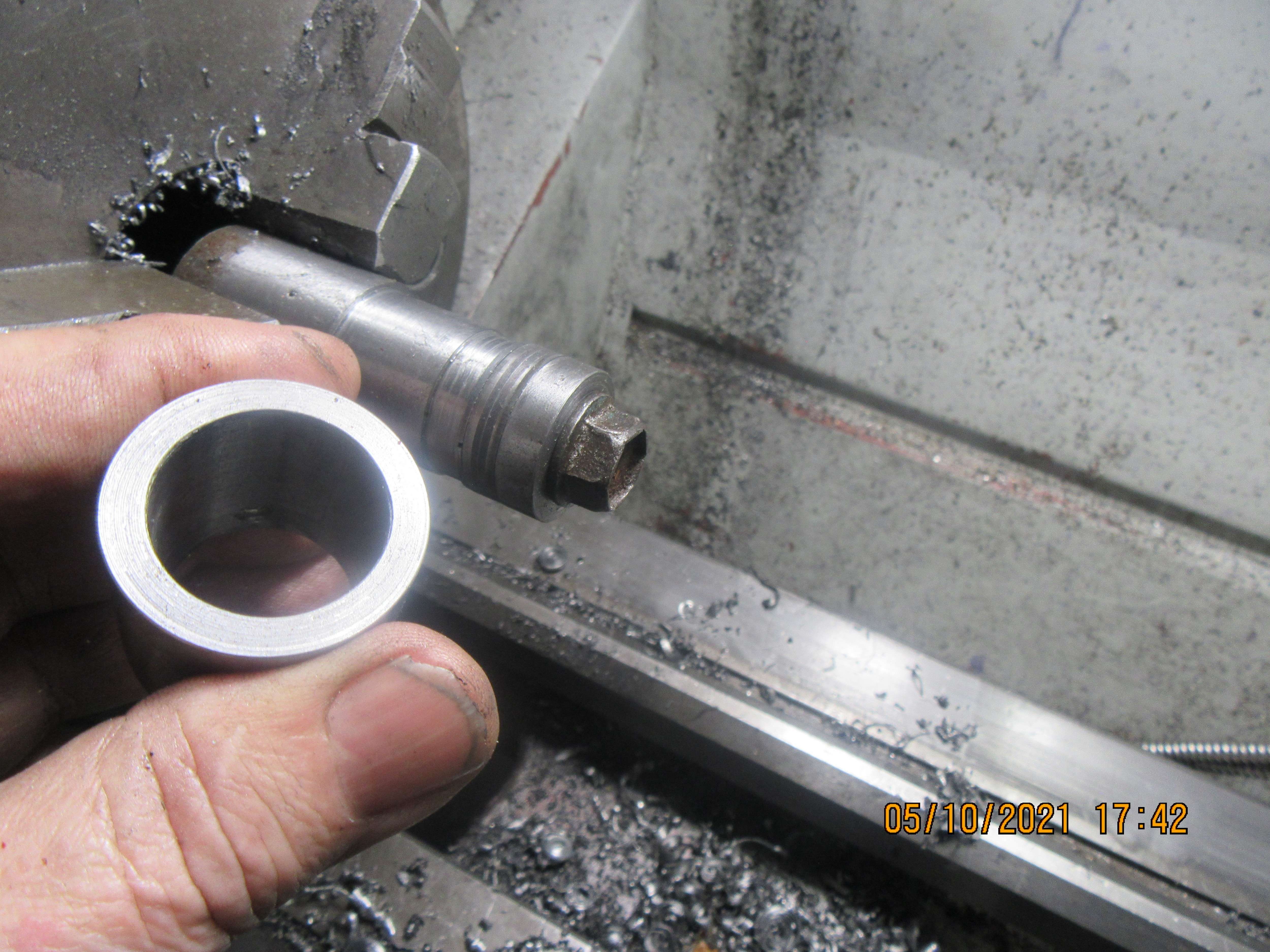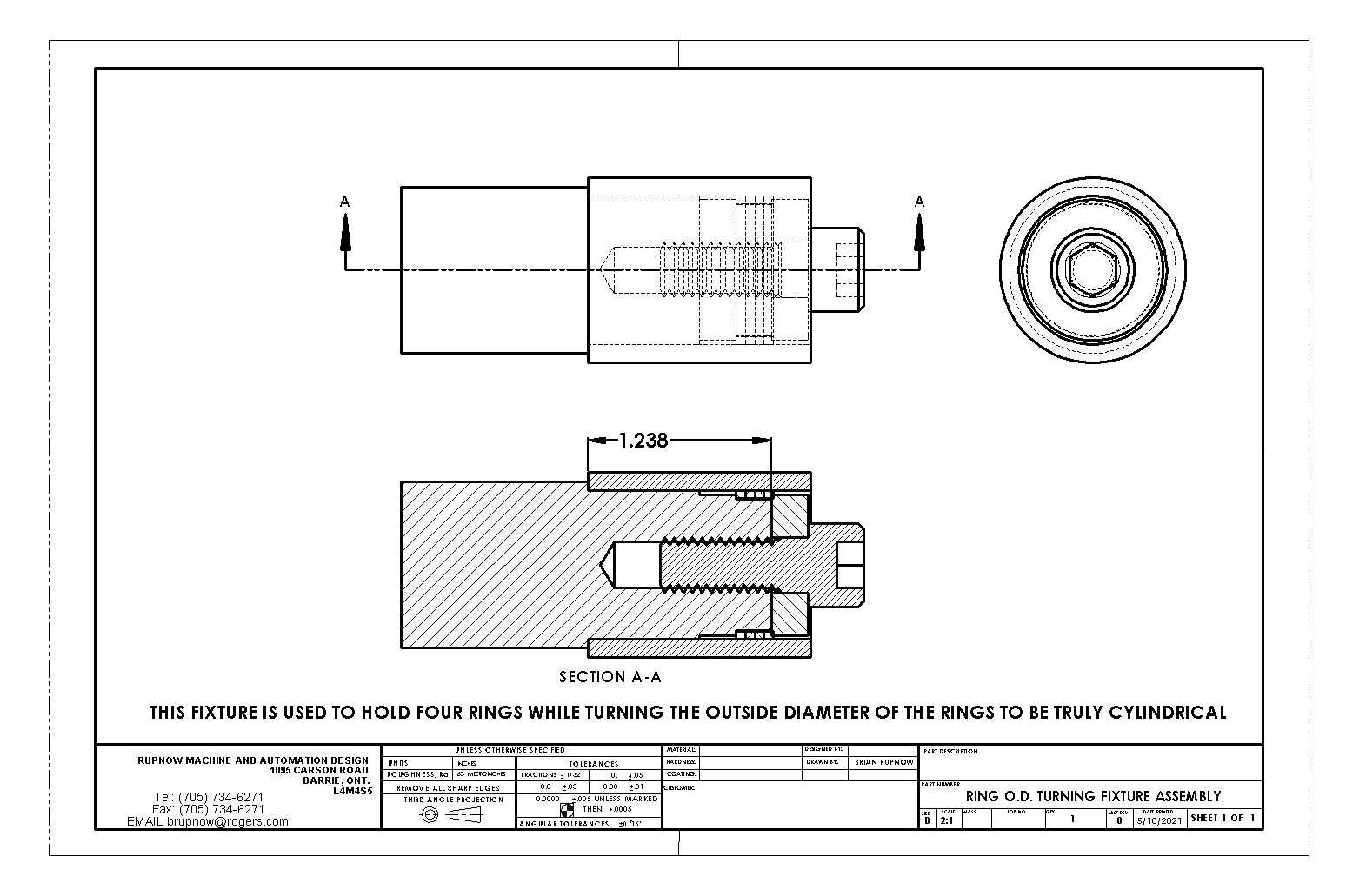---Time for an update on what is happening with this. I don't have any problem with machining the rings to size on o.d., i.d. nor width. The width is easier than you would think, because cast iron machines very easy and is very easy to cut down in width on a piece of emery paper on a cast iron surface plate. Solution there is to make sure and cut the rings a few thou "over-width". Cutting the ring grooves in the cast iron piston is easy, but you have to really pay attention to the width of the groove you cut. This is one of those weird times when "what you see" isn't necessarily "What you get". I don't know why, but a 0.062" parting off tool gives me a 0.055" wide slot on a straight in plunge cut. You need to have the ring in your hand and keep trying it for fit in the groove you are cutting. Recommended groove width is 0.001" wider than the ring, with square sides, no taper. The groove should be .003" to 0.004" deeper than the radial width of the ring. When pushed down into place in the groove, the groove has to be deep enough for the ring to set below the outer surface of the piston.------------I don't have any problem breaking the ring on one side by putting the ring partially into the vice and pressing sideways on the ring with my fingers.------I don't have any problem cutting the ring with an 0.020" slitting saw like Philip Duclos recommends. Heat treating the ring and doing the same heat treat to all of the rings with a "gag" piece holding the ring open doesn't seem to be a problem, except that you can't really use an oxy aceytlene torch.--Too hot. Too fast!!!! Flame from a propane torch seems to do a much better job.----I don't have a problem setting the heat treated ring into the cylinder squarely and checking the gap, and no problem filing the gap with an ignition points file until it reaches 0.004" wide.-------------Fitting the ring over the piston and down into the groove isn't as much of a problem as you would think---just use lots of #30 lubricating oil and a bit of thumb pressure and patience.--------It's not a problem to hold the cylinder up to a bright light and check that no light is coming past the sides of the ring (Which means that that ring is bad and won't seal.)-----The problem comes when after all of these things are looked after properly, the rings are not sealing in compression. My belief, and that of many people reading this post, is that the outer diameter of the ring is not perfectly circular, and as a consequence is not tightly contacting the wall of the cylinder. Chadock (A ring guru) agrees with me/us. So---What to do? The only thing left to do is to assemble all of the rings on a fixture, align all of the rings with a slide on fixture that aligns the outside diameter, and then clamp them, remove the slide on alignment tool, and then take a cutting pass on the outside diameter of the rings to ensure that they are perfectly round. The outer diameter of the ring does not have to be completely concentric with the inner diameter. This cutting pass can be made by either a very sharp tool or by a toolpost grinder, or by lapping.----and should be less than 0.001" deep.























![MeshMagic 3D Free 3D Modeling Software [Download]](https://m.media-amazon.com/images/I/B1U+p8ewjGS._SL500_.png)
![DreamPlan Home Design and Landscaping Software Free for Windows [PC Download]](https://m.media-amazon.com/images/I/51kvZH2dVLL._SL500_.jpg)








































